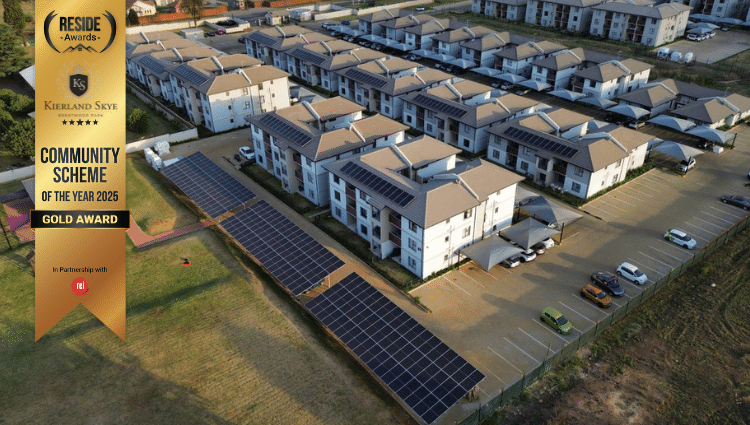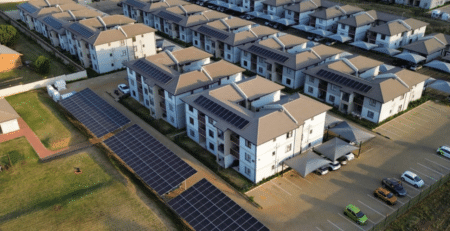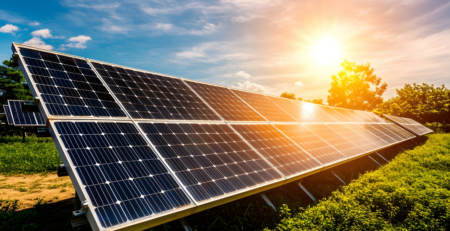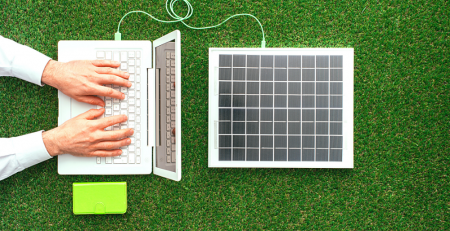Why adding batteries to your existing solar system makes more financial sense than ever
South Africans are no strangers to the frustration and economic impact of unreliable power supply. In 2023 alone, the country endured more than 270 days of load shedding. For homeowners and community schemes who have already invested in solar PV systems, the next logical step in energy independence is battery storage, and the financial benefits during tough economic times are compelling.
While solar panels can slash daytime electricity bills by capturing free energy from the sun, the real game-changer for cost savings and resilience comes when you pair them with a battery energy storage system (BESS). Batteries allow you to store excess solar power for use during peak tariff times and outages, ensuring not only uninterrupted supply but also strategic cost reductions.
Traditionally, many people think of batteries purely as a backup solution. But in today’s high-tariff, high-inflation environment, batteries are also powerful financial tools. With the right design and strategy, a battery system can:
- Maximise self-consumption of the solar so as not to waste it
- Shift consumption away from expensive peak tariff periods(tariff arbitrage)
- Reduce maximum demand charges from utilities
- Provide predictable, stable energy costs
- Shield against future tariff hikes
Kierland Skye is a real-world proof of savings
Kierland Skye, a 255-unit residential estate in Benoni, perfectly demonstrates how solar with batteries can deliver both resilience and financial relief. The developers and trustees, in partnership with Bright Light and STS installed:
- 360 kWp solar PV system, which powers the complex during the day
- 1000 kWh battery storage, which stores surplus power for evenings and outages
- Smart controls, which prioritise lighting and security systems for 24/7 operation
The results speak for themselves:
- Tariffs 5% lower than grid rates from day one
- Over R24,006.19 saved in April 2025 alone
- 4,500+ tons of co₂ avoided every year
- 54,801 litres of water saved annually
Kierland Skye recently received Gold in the Community Scheme of the Year category at the Reside Awards 2025. This is proof that smart energy investments are recognised not only for sustainability, but also for delivering tangible, long-term value.
READ: Three great reasons (and a bonus) why your community scheme should go solar
How batteries save you money
Adding battery storage to your solar system unlocks financial savings that go beyond just backup power. While solar panels reduce daytime electricity costs by generating clean, free energy from the sun, batteries ensure that this energy is not wasted and continues to deliver value even when the sun isn’t shining.
By storing excess solar power for later use, batteries:
- Maximise the benefit of your solar system by ensuring more of the energy you produce is actually used
- Reduce reliance on the grid, lowering overall monthly energy bills
- Provide stable, predictable energy costs that protect against rising tariffs
- Minimise financial losses caused by outages by keeping essential services running
For homeowners and community schemes, this means not only direct savings on electricity, but also better long-term financial planning. With a funded model, battery systems can be installed with no upfront costs, ensuring affordability from day one. Batteries also strengthen the value of solar investments by extending their impact, giving communities greater financial resilience and control in an unpredictable energy market.
Avoid grid outage losses
Even short outages can cause costly disruptions, from security downtime to business interruptions for home-based workers. Batteries however, ensure essential services stay online, avoiding both direct and indirect costs. Batteries also offer financial predictability in tough economic times.
When inflation is high and energy tariffs keep rising, financial predictability becomes as valuable as cost savings themselves. With a battery-backed solar system:
- Monthly costs stabilise (no more surprises from Eskom’s seasonal tariff hikes).
- No upfront capital needed (with STS’s fully funded model, you can upgrade to battery storage with no immediate outlay).
- Long-term maintenance covered (our partners at Bright Light handle all servicing, panel cleaning, monitoring, and even battery replacement after 10 years at no extra cost).
This means community schemes and homeowners can budget with confidence, knowing that both energy security and cost control are built into their monthly expenses.
While the financial case is strong, batteries also multiply the environmental and lifestyle benefits of solar. With batteries, you can decrease your scheme’s carbon footprint even more since more stored renewable energy means less reliance on fossil-fuel power stations during peak hours. Batteries also reduce grid strain, as shifting energy use away from peak times helps stabilise the national grid.
READ: Understanding the risks of solar batteries and how STS ensures safety
Why now is the time to add batteries
Given South Africa’s economic pressures and volatile energy market, delaying battery adoption can mean paying more each year as tariffs rise; losing potential savings from tariff arbitrage, and continuing to expose your scheme to the disruption and costs of outages. Integrating battery storage now locks in savings, enhances energy independence, and increases property value (all with no upfront capital when using a funded model like STS offers).
READ: Are solar and battery backup solutions still worth it in community schemes?
The STS & Bright Light advantage
With STS and Bright Light, you can enjoy immediate savings, long-term cost control, and the security of uninterrupted power all without spending a cent upfront. In tough economic times, that’s not just smart energy, it’s also smart living. Our approach combines:
- Custom design based on your scheme’s load profile and tariff structure
- Full installation and integration with existing solar systems
- No-upfront-cost financing for community schemes
- End-to-end maintenance and monitoring for the life of the agreement
In today’s South African energy landscape, the smartest communities aren’t just generating their own power, they’re also storing it. The Kierland Skye case study proves that adding batteries to an existing solar setup isn’t just about backup power; it’s about creating a resilient, financially predictable, and future-proof energy system.





